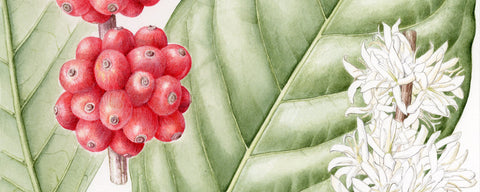First Published - October 19, 2012
Jose Fernando Lopez Lopez, member and vice president of the coffee department in Esquipulas Cooperative, Huehuetenango Guatemala who produce our “Liberacion“, is very proud of his wet mill equipment. The way he speaks about coffee is inspiring and in recent years he has invested a lot of time in his coffee and the cooperative organization.
He has many ideas and aspirations. Last year, he upgraded his wet mill because it was too small, and restricted the speed and volume he could pulp his coffee. Now he plans to hitch his old depulper onto his pick-up truck so that he can go out to the fields with his wet mill and depulp the coffee there. Depulping on site will mean less coffee to transport, and fewer trips to the parcels overall. Instead of transporting the cherries to the dry mill he can now transport parchment, and save time and money Very innovative! He should also discover that by pulping cherries almost immediately after picking his quality will improve even further.
Jose also owns a pharmacy. He employs day labourers who take care of his coffee up in the mountains, day to day. He needs to visit his pacels of land regularly to keep guiding the day labourers in washing, fermenting and drying the coffee. Below he is checking the progress of beans as they dry.
The wet parchment coffee contains greater than 50% moisture, which must be carefully dried to reduce the water content down to 12%. To dry this parchment coffee, the beans are arranged in a thin layer on large concrete patios to dry naturally in the sun. The beans are raked regularly throughout the day to ensure even drying throughout the parchment layer.
An alternative approach is to create raised “African Beds” where the beans are spread on open-mesh netting suspended above the ground on tables, that allows the air to circulate above and below. Whichever approach is taken, drying time must be controlled and is dependent upon weather conditions and relative humidity. Rapid drying can cause the parchment to split which is detrimental to the coffee, and slow drying with poor air circulation will contribute to mould growth.
Although sun-drying is the favoured technique because it is considered to contribute towards enhanced cup quality, mechanical drying is also used in some circumstances. Here beans are rotated in drums that are blown through with hot air. This can be an effective technique to “predry” before finishing with sun-drying, or if weather conditions are just too wet. Complete mechanical drying is not always well regarded for specialty coffee and may contribute towards lower cup quality.
At some co-operatives, they have built covered patios (parabolic driers) to protect the raised “African” drying beds. This is a tent-like structure- the top and walls are made from plastic, protecting the coffee from rain, and sometimes mesh is used which facilitates air flow which helps to avoid condensation which could cause mould to grow.
Maize is a most important crop in Guatemala as the ground flour is used to make tortillas which are part of every meal here. At the end of the season when all the coffee is dried, the terraces are used for drying maize too.







